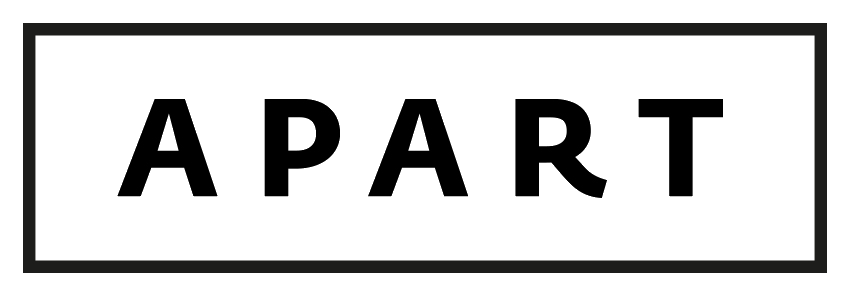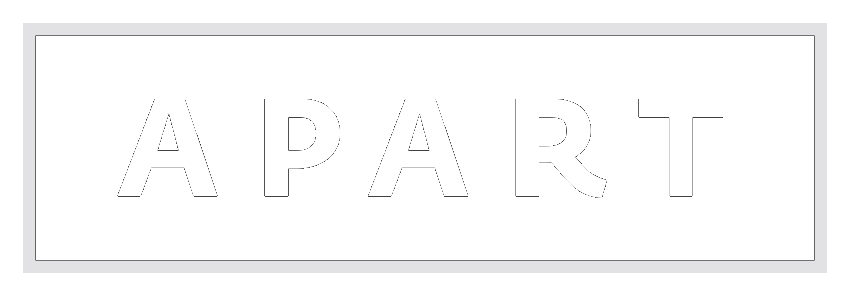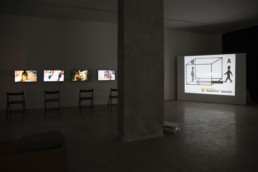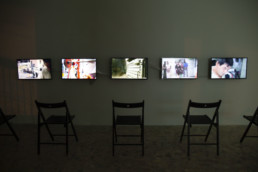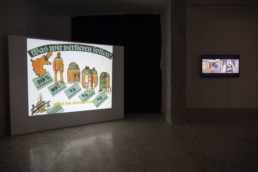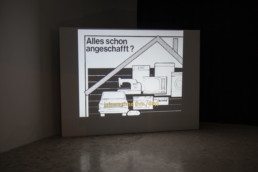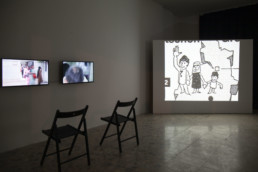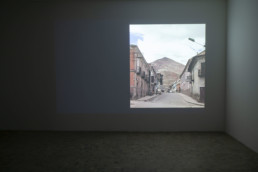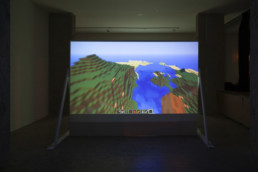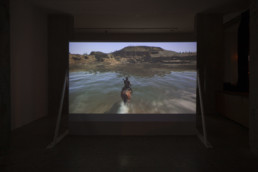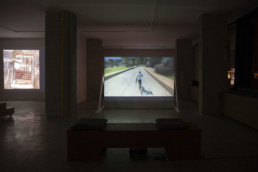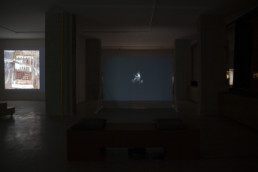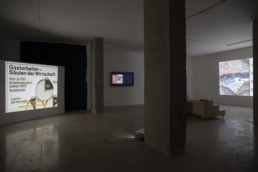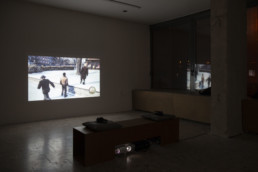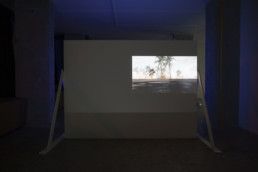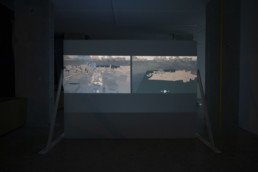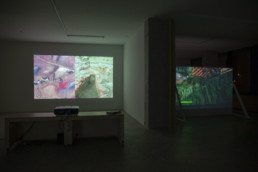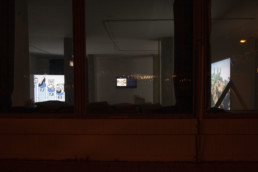Opening: 14.1.2022
On view until: 28.2.2022
Exhibiting artist: Harun Farocki
Curated by: Peter Sit (APART Collective) in collaboration with Antje Ehmann
Shaping of our Present is the first solo exhibition of filmmaker, video essayist and author Harun Farocki in Slovakia. Harun Farocki is an important filmmaker who has influenced generations of filmmakers, artists and intellectuals.
Citing the influence of such Marxist cultural practitioners as theater director Bertolt Brecht, philosopher Theodor Adorno, and film director Jean-Luc Godard, Farocki consistently addressed two principal subjects: the practices of labor and the production of images.
This exhibition is a small demonstration of Farocki’s work (he has produced about a hundred films, video essays and documentaries in his lifetime) but also gives us an insight into why Farocki’s thinking and film language are still important for understanding the mechanisms of labor, surveillance, technology, colonization and production and control of images.
Harun Farocki (1944, Novy Jicin-Berlin, 2014). The work of the artist and film-maker has had a decisive influence on the history of the political film since the late 1960s. Besides over 100 productions made for television and cinema, Farocki – as long-time author and editor of the magazine Filmkritik, curator, and visiting professor in Berkeley, Harvard and Vienna – has conveyed his reflections on the relation between society, politics and the moving picture. His huge significance for the visual arts is reflected in retrospectives of his films in institutions such as Institut Valencià d’Art Modern, Fundació Tàpies/Barcelona and the Tate Modern/London, as well as in solo exhibitions at MUMOK/Vienna, Jeu de Paume/Paris, Museum Ludwig/Cologne, Kunsthaus/Bregenz and more recently at MUAC/Mexico and the Hamburguer Bahnhof in Berlin. In 1997 and 2007 Farocki took part in the documenta in Kassel, as well in the Venice Biennale (2013 and 2015). His work sets out a constant research on the conditions of production of the audiovisual image, visual resources and narratives, and the subtexts contained in the production and distribution of moving images.
The gallery program is supported using public funding of Slovak Arts Council and by Goethe-Institute Slovakia
